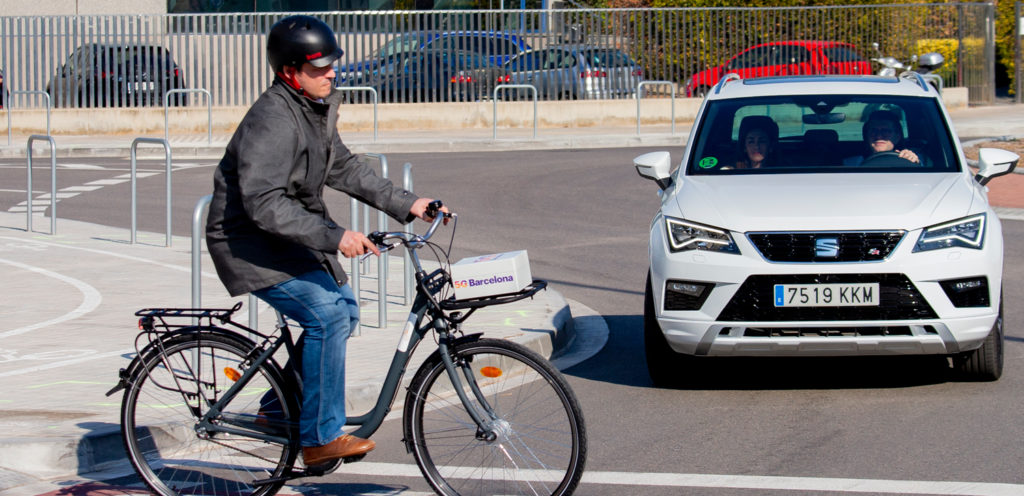SEAT has presented a future where it may be possible for connected and autonomous vehicles to avoid collisions by using 5G to predict the road ahead.
The Spanish car maker claims that 68% of accidents could be avoided using the fifth-generation cellular network, which would be able to take advantage of connected cameras, sensors and beacons as part of city infrastructure to communicate with the car.
It would be able to detect pedestrians via connected traffic lights and send information to the car to alert the driver.
“Before, the car only gave information the driver could see. Now, thanks to 5G technology, the car will get information from the city before the driver sees it,” said SEAT engineer César de Marco.
One of the characteristics of 5G technology is the low latency, or the time it takes for a network to respond to commands. Humans, for example, respond to touch, sight or smell in about 150ms milliseconds. “With 5G connectivity, the reaction time from when the car detects an obstacle to when it is communicated would be about 5 milliseconds,” said de Marco.
However, for the 5G network to successfully work with connected cars, local administrators and telecoms companies will be required to install the infrastructure first.
“We are upgrading our system networks and deploying our servers closer to the end user,” said Telefónica spokesperson Leticia López. “And we are using a traffic management application that gives real-time data.”


